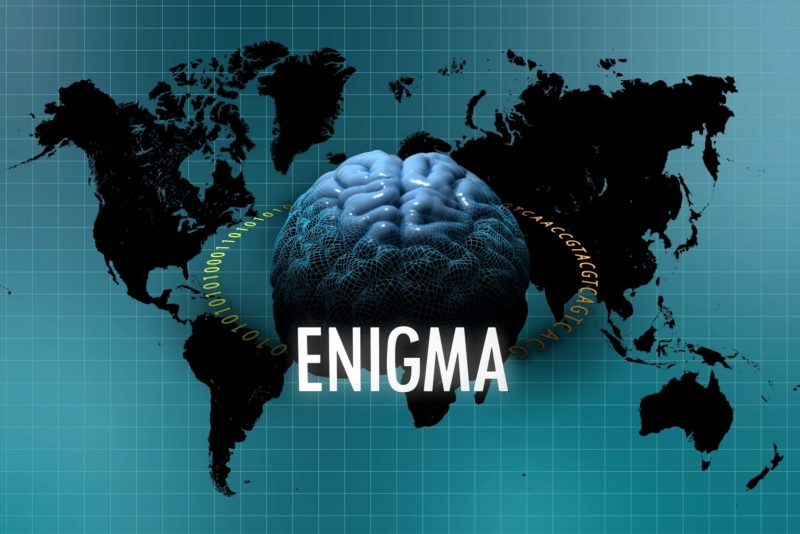This serious mental health disorder comes with dramatic and sometimes unpredictable shifts in mood, energy and activity levels.
By Sidney Taiko Sheehan

The Enhancing NeuroImaging Genetics through Meta-Analysis (ENIGMA) Consortium is a collaborative network of researchers working together on a range of large-scale studies that integrate data from institutions across the globe. Organized into Working Groups that tackle questions in neuroscience, genetics, and medicine, ENIGMA studies have analyzed neuroimaging data from thousands of subjects. Photo credit: USC Stevens INI.
Bipolar disorder is a chronically underfunded and understudied mental health condition that affects 2.3 million Americans, and nearly 45 million people worldwide. This serious mental health disorder comes with dramatic and sometimes unpredictable shifts in mood, energy and activity levels. Bipolar disorder is characterized by disruptive recurrences of mania and depression that may last for weeks, months or even years. In addition to the immeasurable personal impact, the economic burden of bipolar disorder is estimated to be approximately $200 billion annually in the U.S. alone.
In 2012, The ENIGMA Bipolar Disorder Working Group formed a large collaborative neuroimaging study to advance our understanding of the brain mechanisms underlying bipolar disorder. Christopher R. K. Ching, PhD, a postdoctoral fellow and NIH T32 training grant recipient with the USC Mark and Mary Stevens Neuroimaging and Informatics Institute (USC INI) at the Keck School of Medicine of USC, serves as co-chair of this effort, an expanding international team of 150 leading researchers from 20 countries and 55 research institutions, including a growing sample of over 12,000 research subjects.
“A critical barrier to improving diagnosis and treatment outcomes for individuals with bipolar disorder is a limited understanding of how commonly prescribed medications influence brain structure and function. A better grasp of how common treatments influence the brain could help us understand why particular treatments are helpful for some and not others,” says Ching. “The goal of this project is to use our large-scale collaborative research network and advanced analysis techniques to map the complex relationship between bipolar disorder, common medications and other clinical factors. This could identify potential brain signatures that predict treatment response, illness progression and ultimately help improve patient outcomes.”
“Another key goal of our work will be to actively engage patients, caregivers, clinicians and other stakeholders to disseminate our scientific goals and research findings. By improving our collective understanding of how medications for bipolar disorder work in the brain, we hope to better align our research with the goals of patients, leading to better treatment and care for those with mental illness,” says Ching’s research advisor, Paul M. Thompson, associate director of the USC INI.
This past spring, the Milken Institute and the Baszucki Brain Research Fund launched a dedicated grant program aimed at advancing therapeutic discovery for bipolar disorder. The Fund selected Thompson and Ching’s promising work and will provide $200,000 over the course of one year. Another USC INI postdoctoral researcher and NIH T32 training grant recipient, Leila Nabulsi, PhD, is also heavily involved in the work.
“It’s important to note that an NIH T32 training grant allowed me the unique opportunity to continue the foundational work I conducted during my graduate training, and today I continue to lead large-scale, international neuroimaging efforts. The T32 was instrumental in preparing me for where I am now. It’s so encouraging to get training grant support that then puts you in the position to find more dedicated funding like the Baszucki Brain Research Fund, so you have even more resources to innovate in your work.”
INI Director Arthur Toga, principal investigator of the T32 that supported Ching, is pleased to see how the pipeline of experiential learning and training is leading to successful funding for early career investigators. “One of my top priorities is to ensure that all members of the INI, be they graduate students or postdocs or faculty members, have the support and resources to grow and develop their work. I’m excited to see what the team can accomplish with this new award.”
